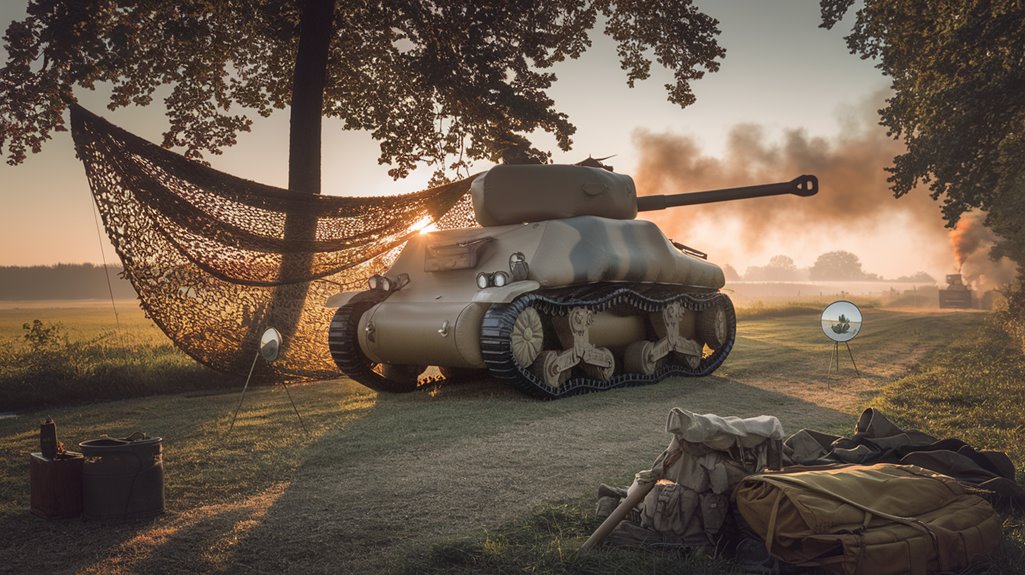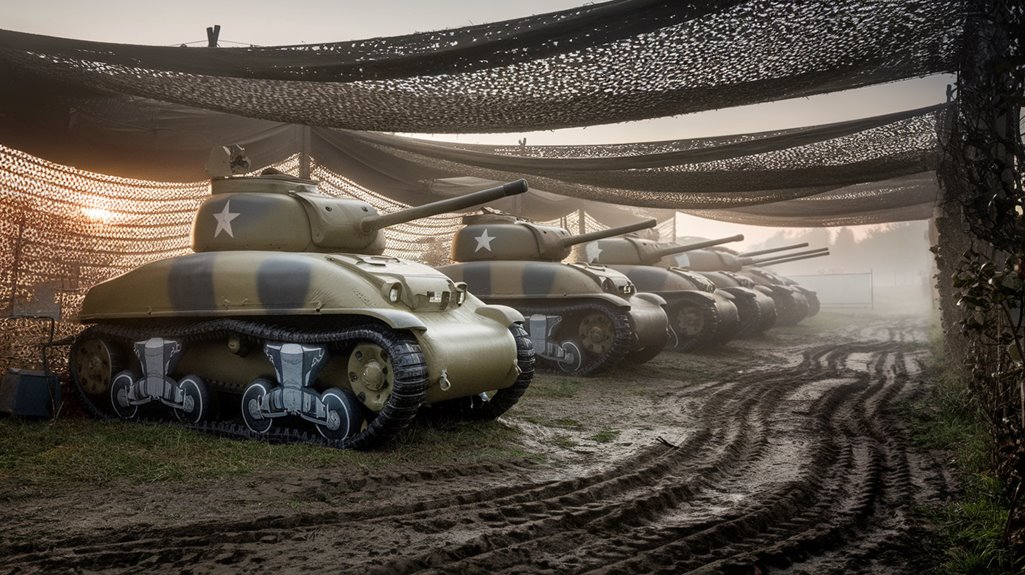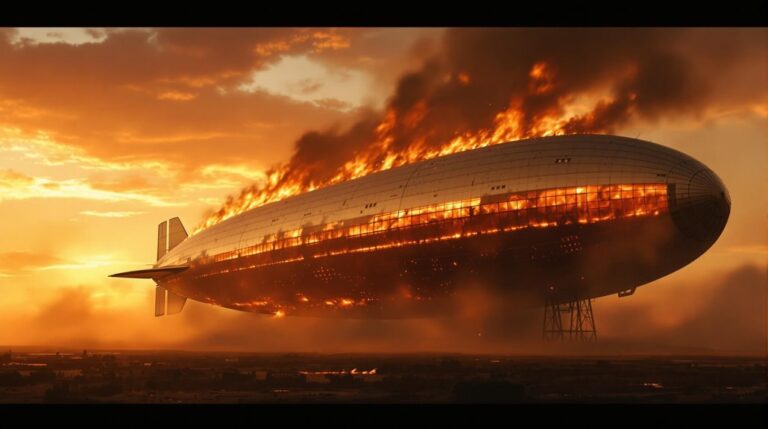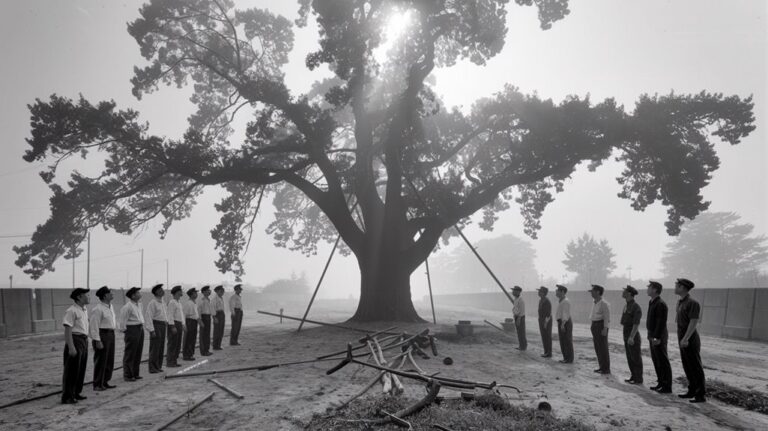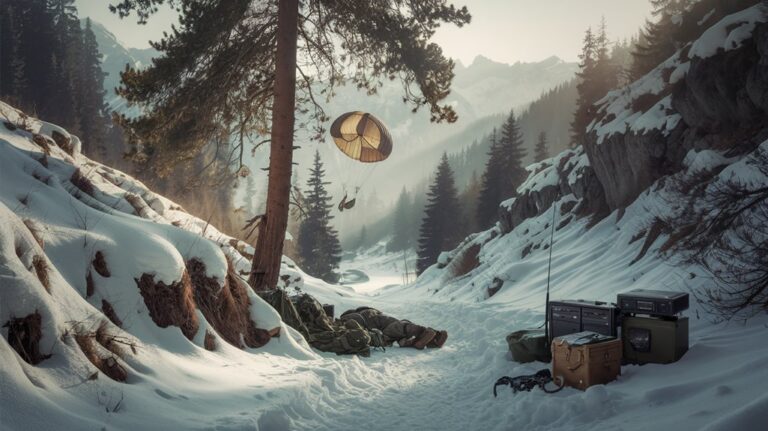The Ghost Army of WWII: A Deceptive Unit That Fooled the Enemy
You've likely heard tales of World War II's most daring operations, but there's one story that remained hidden for decades. The Ghost Army stands as one of military history's most creative and unusual units – a group of artists, actors, and designers who staged elaborate battlefield deceptions using inflatable tanks, sound effects, and theatrical skill. Their classified missions saved thousands of lives, yet most Americans didn't know they existed until 1996. What they accomplished will challenge everything you think you know about warfare.
Origins and Formation of the 23rd Headquarters Special Troops
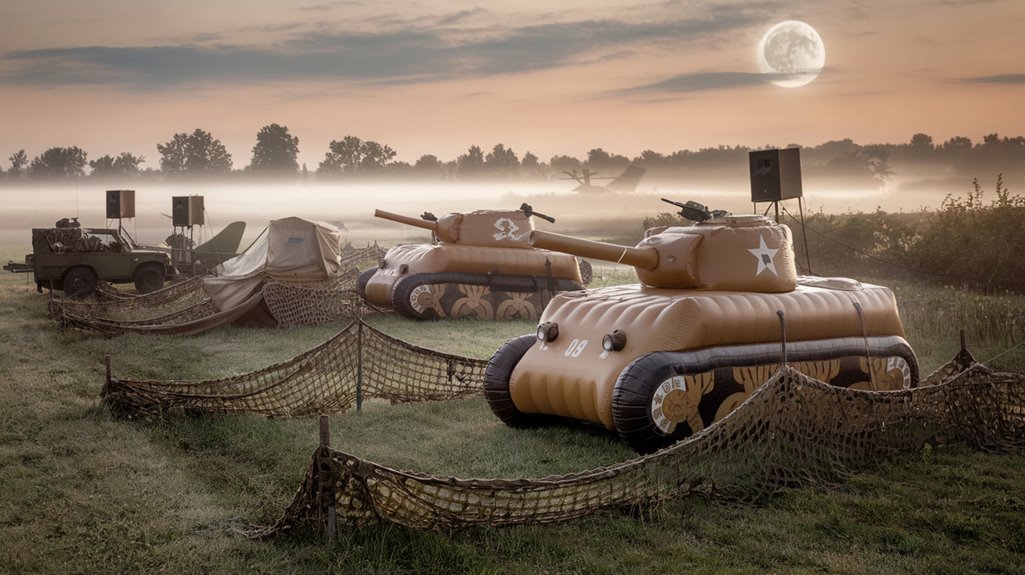
Three distinct military units merged to form the 23rd Headquarters Special Troops, activated on January 20, 1944, at Camp Forrest, Tennessee. Major Ralph Ingersoll conceptualized this unique force, drawing inspiration from successful British deception strategies like Operations Bertram and Fortitude. The unit later moved to Pine Camp, New York to complete its training.
Under Colonel Harry L. Reeder's command, the unit combined the 603rd Engineer Camouflage Battalion, 3132 Signal Service Company Special, and 406th Engineer Combat Company. The unit excelled at creating battlefield deception illusions that effectively drew enemy fire away from actual Allied positions.
The unit's creative recruitment focused on talented individuals from art, engineering, and entertainment backgrounds. You'll find that they selected personnel with high IQs, averaging 119, including notable artists like Bill Blass and Ellsworth Kelly.
Tactical Deceptions: Art of Military Illusion
Through a masterful blend of stagecraft and strategy, the Ghost Army elevated military deception into an art form during World War II. Their tactical maneuvers included creating elaborate canvas and inflatable equipment displays that fooled enemy observers, while skilled operators mimicked radio patterns of real units to maintain authenticity.
You'll find their psychological warfare techniques were remarkably sophisticated. They'd stage theatrical performances in occupied towns, knowing enemy spies were watching, and generate false radio traffic to feed misinformation directly to German intelligence. The success of their deception campaigns was confirmed through intercepted Ultra signals intelligence. Following the principles of ambiguity increasing deception, they deliberately created confusion by presenting multiple possible friendly force positions.
Like master illusionists, they'd combine multiple forms of deception – from camouflage to demonstrations – to create convincing battlefield illusions.
Their methods proved so effective that post-war analysis revealed their deceptive operations considerably influenced major campaign outcomes, making them one of WWII's most innovative special units.
Key Operations and Strategic Impact
While many WWII units earned fame through direct combat, the Ghost Army's most remarkable victories came from battles they never actually fought. Through their masterful deception tactics, they successfully protected Allied forces during pivotal moments like Operation Fortitude and the Battle of the Bulge. This specialized unit of creative combat artists helped shape the outcome of crucial military engagements.
You'll find their operational success spanned over 20 large-scale missions, where they used everything from inflatable tanks to sound effects and fake radio transmissions. By creating convincing illusions of entire divisions, they repeatedly fooled German intelligence about troop movements and strength. Working with wire recording technology, they captured and played back realistic battlefield sounds to enhance their deceptions.
Their strategic impact was profound during the Rhine River crossing, where they diverted enemy attention from actual crossing points. The unit's innovative methods didn't just save countless Allied lives – they helped redefine military deception and earned them a well-deserved Congressional Gold Medal.
Extraordinary Personnel: Artists, Architects, and Actors at War
Creative genius fueled the Ghost Army's ranks, as the military specifically recruited artists, architects, and actors for their unique skills in deception.
These creative collaborations brought together diverse talents from various artistic backgrounds, including painters, set designers, and industrial experts who'd later become renowned figures in their fields.
You'll recognize names like Ellsworth Kelly, who emerged as a celebrated minimalist painter, and Bill Blass, who revolutionized fashion design after the war.
Other members, such as Jim Steg and Arthur Singer, went on to distinguished careers in printmaking and illustration.
Many veterans of this unique unit became influential professors at prestigious universities, while others pioneered new art techniques.
Their combined force of 1,023 enlisted men played a crucial role in executing 22 large-scale deception operations across Europe.
Their wartime experiences shaped their post-war artistic expressions, proving that their military service wasn't just about fooling the enemy—it was about harnessing creativity for victory.
Between missions, the unit organized art shows in churches that had been damaged by bombing, showcasing their creative works even during wartime.
Innovative Equipment and Methods
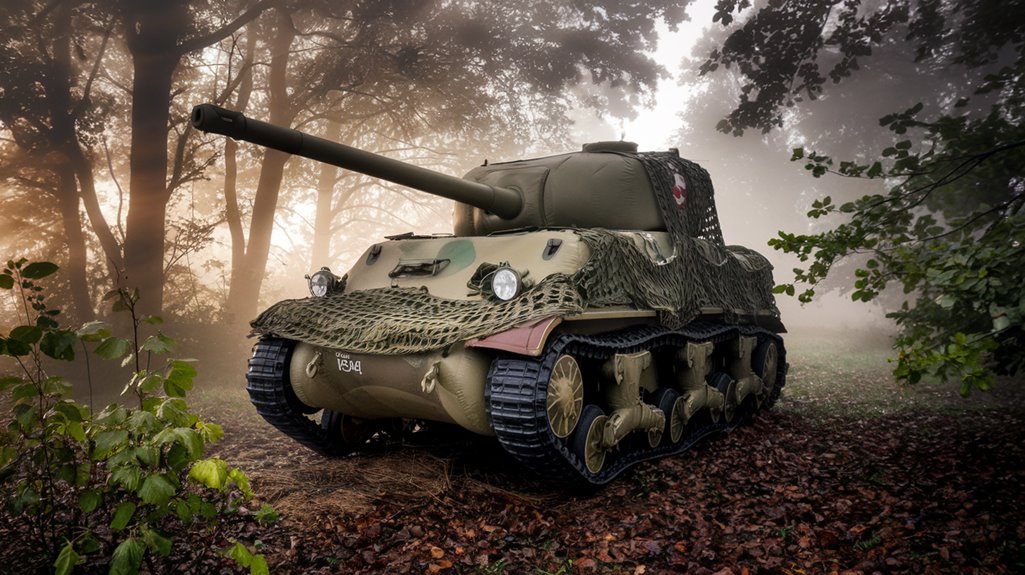
To execute their elaborate deceptions, the Ghost Army deployed an arsenal of cutting-edge equipment that would seem more at home in a Hollywood studio than on the battlefield.
Their deceptive technology ranged from 93-pound inflatable tanks to sophisticated sound equipment capable of broadcasting auditory illusions up to 15 miles away.
The specialized unit remained classified until 1996, keeping their innovative methods secret for decades after the war.
You'll be amazed by their four primary tools of deception:
- Giant speakers mounted on halftracks playing recordings of armored units
- Inflatable dummy vehicles and equipment that could fool aerial reconnaissance
- Wire recorders creating fake radio transmissions and Morse code traffic
- Theatrical props including divisional insignia and simulated military police
Working with Bell Labs engineers, they perfected these techniques to create convincing battlefield scenarios that could be deployed within hours, making the Ghost Army one of WWII's most innovative units.
The unit's expertise in deception helped them conduct over 20 successful campaigns throughout the war.
Legacy and Recognition: From Secrecy to Congressional Gold Medal
For nearly fifty years after WWII, the Ghost Army's extraordinary deceptions remained locked away in classified files until their declassification in 1996.
Veterans of the unit had voluntarily kept their silence, protecting the historical significance of their missions until the government released the records.
The unit's arsenal included inflatable tanks and equipment that fooled German forces into seeing phantom armies where none existed.
You'll find their legacy wasn't forgotten once the truth emerged. Rick Beyer's documentary and book helped raise public awareness, leading to a decade-long campaign for recognition.
 23rd Headquarters Special Troops, they conducted approximately twenty battlefield deceptions across Europe.
23rd Headquarters Special Troops, they conducted approximately twenty battlefield deceptions across Europe.
In 2024, the unit's contributions were finally honored with Congress's highest award – the Congressional Gold Medal.
Three surviving members attended the ceremony at the U.S. Capitol, where they received recognition for their ingenuity and selfless service that helped secure victory in WWII.

